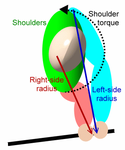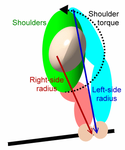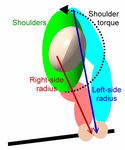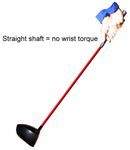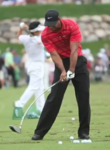So @JonMA1 has a thread on iron swing effort that got me thinking about swing speed and how it’s generated.
I’m a fairly athletic guy that feels like I put a lot of effort into my swing speed and feel like I fall way short on speed given the effort it seems I apply. Overall, my coach is pretty happy with my form and how deep I get into my backswing however I do have an early release.
My question is, where is the club head speed primarily derived from? Is it in a delayed release that maximizes speed at impact with the “whipping” of the club head at the bottom of the swing?
I’m a fairly athletic guy that feels like I put a lot of effort into my swing speed and feel like I fall way short on speed given the effort it seems I apply. Overall, my coach is pretty happy with my form and how deep I get into my backswing however I do have an early release.
My question is, where is the club head speed primarily derived from? Is it in a delayed release that maximizes speed at impact with the “whipping” of the club head at the bottom of the swing?





